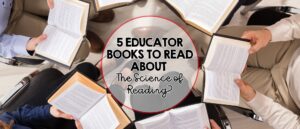I find the concept of schema-building incredibly useful when thinking about curriculum design and teaching. It’s a really a spatial metaphor more than anything physical/concrete – but it has fantastic explanatory power and can help teachers consider the whole process of securing each student’s understanding of a set of ideas. I”ve written about this before – there’s lots of overlap in these posts – but a good idea is always worth revisiting so here’s the Five Ways version.

Learning is complicated so it can be useful to use conceptual models to help understand and discuss it. For…

Recently, as I’ve engaged with numerous curriculum webinars (eg EduGiveUK) and continued working with schools and colleges, observing and…
The key idea is that the schema in our long-term memories have to be built over time, starting with where students are and then introducing them to ideas in a form that makes sense based on what they already know. This isn’t linear or simple and involves weaving together multiple strands of knowledge and experience. If you are aware of this and consciously construct learning with these ideas in mind, I think you do a better job of it, allowing students to construct their schema in a more secure manner.
Here are five components to explore – using some examples.
Concrete – experiential
What are the most concrete, physical, hands-on experiential foundations of the ideas you are teaching? Can you assume students will all definitely have had those experiences or do you need to engineer them now so you can be sure? Will the learning make sense at all without having these foundations – or, at least, would it all be much deeper?
- feeling ice melt on your hand, sensing the cold and thinking of it as ‘heat leaving your hand and going into the ice’, feeling the ice become wet, melting, turning into water.
- using rods to make number bonds and blocks to create areas and volumes.
- walking in a forest in autumn, kicking the leaves, hearing the breeze through the trees, seeing birds and squirrels, finding wood lice under the fallen logs, seeing the badger set – the mysterious tunnels into the ground. (a school trip?)
- visiting the ruined 12th century castle keep, a Roman fort, a museum to see the physical artefacts that tell us about our past.
Spatial – pictorial
Can you use images, diagrams, maps and videos to show students what things look like, how they are organised and where things are in the world?
- routine use of maps and images of every place you ever mention – a country, a city, a sea, a desert, a famous building, somebody’s birthplace – so that a world picture builds over time, from local to global. eg dealing with the ‘Africa is a country’ misconception, showing multiple images of Africa embracing traditional and modern aspects and always showing specific countries and where they are, just as we do with Europe.
- showing a wide range of photographs of types of cells in the body showing the variety and giving a sense of scale, before then showing the classic diagrammatic representations – making the links explicit.
- using a range of images – photographs and videos – showing aspects of life in the early 20th Century in London and New York, highlighting living conditions, transport and general street life.
- making it routine to show images of any object, place or person that is referred to.
Narratives, stories, sequences
Using concrete and pictorial elements as a foundation, can you link the ideas you are teaching such that they tell a story? This will allow students to tell themselves that story, linking ideas and terminology together in a sequence so that it makes sense and is easier to encode and retrieve later:
- the story of a character in a play – what happens to them and the role they play in the wider narrative
- how a bee pollinates flowers, picking up pollen from the anthers of one and transferring it to the style of another.
- the story of the Henry VIII’s break from Rome (fuelled by – love, power, money, faith?), the divorce of Catherine of Aragon, the death of Anne Boleyn and the formation of the Church of England.
- the story of ice melting to form water, of water vapour condensing to form water and of the water cycle linking oceans, clouds, rain and rivers.
- the narrative of multiplying out brackets; first this, then that… and as a result… this.
Linked ideas will always make more sense than isolated facts. ‘Anther’ only makes sense in schema for flowers and the story of pollination.,

This whole story will form a more secure, rich schema if children have seen real bees buzzing around real flowers, have seen multiple flowers to explore the parts, identifying the anthers, have access to visual representations that help consolidate their sense of what the parts are and what they do… and then finally if the children are told the story of pollination in a direct fashion, so it is accurate and makes sense and later have a chance to tell that story themselves, fully scaffolded at first and then using retrieval practice so that they learn to produce the terms and don’t only recognise them.
Explicit Connections and Application
For our knowledge to be flexible, not fixed, we need to apply it to multiple different contexts. If we explore several examples, we can generalise to establish patterns. Then with these patterns or rules, we should then be able to find or generate other examples and spot non-examples. Sometimes we need to recognise the problem type, the question type, the genre of text or purpose of the writing, to plug into the relevant schema before we can develop it further.
- metal + acid –> salt (based on acid name) + hydrogen. So zinc + hydrochloric acid makes…. (zinc chloride + hydrogen
- a simile is a figure of speech the compares two things using ‘like’ or ‘as’. So ‘Joe was as brave as a lion.’ and ‘The children fought like cats and dogs.’ are similes,. ‘She flew through the door in a rage’ is not a simile
- If the angles in a triangle all add up to 180 degree – and shape ABC is a triangle, angle a is 72, b is 50… we can work out angle c. It’s a standard problem type, we have a narrative for the solution type and ideally a sketch diagram to guide our thinking,
Explicit Rehearsal
Without rehearsal, a lot of new knowledge will not stick. Tentative connections that form will fade quickly. All students need to have the opportunity to tell the stories, practise the skills, test out the methods, rehearse explanations, create explanatory diagrams, verbalise word, phrases, definitions or quotes… multiple times, with as much feedback as needed to ensure they’re rehearsing correctly, not practising getting things wrong:
- students in pairs rehearsing the formation of sentences from a sentence builder in French
- children telling each other the bee story or the ice-melting story or the water cycle story – to see if they can link the ideas together and even remember all the correct terms – using peer-supported retrieval so errors are picked up and corrected.
- all students having maximum practice with a maths method, working individually
- all students in pairs practising using structures such as ‘on one hand X but on the other hand Y’ as a preparation for their evaluative writing.
Where students have weak schema for an idea – weak knowledge and/or weak links between bits of knowledge – it’s likely that they didn’t spend enough time developing their schema in one or more of these ways. If you can weave them all together, you maximise the chances of success.



